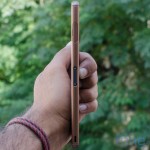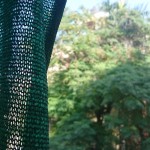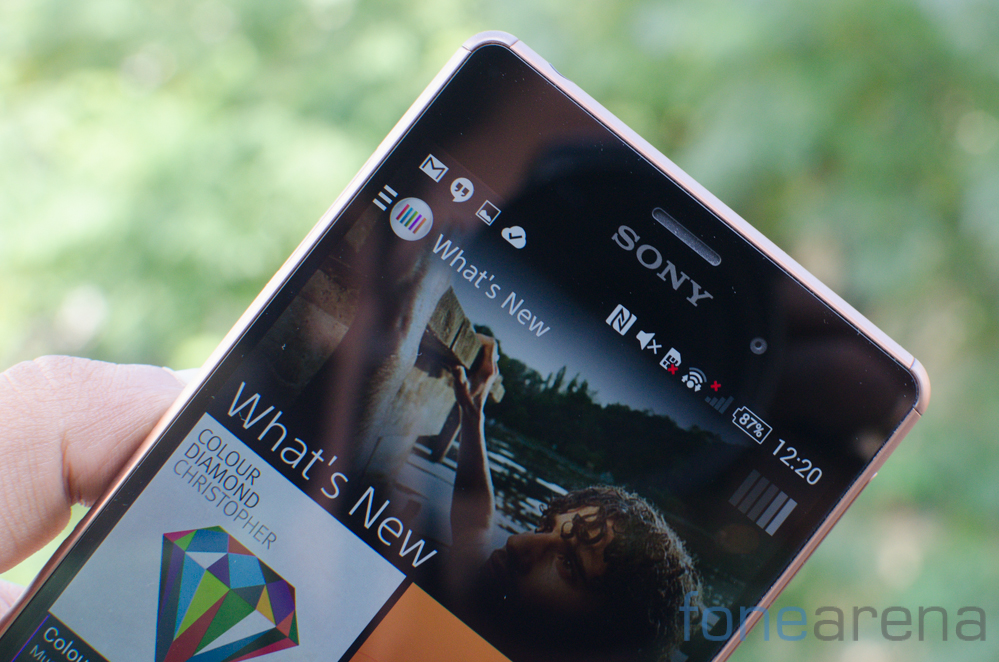
When Sony launched its flagsip ie the Xperia Z2 a few months back, we said that it felt like a device where the thought was on making improvements all around. Improvements that made sense and improved the experience. Fast forward 6 months and Sony already has a successor to their flagship device. Way too early? That’s what we first thought as we unboxed the handset and set it up. A few days later, we’ve had some time to gather our thoughts about what makes the Sony Xperia Z3 tick. Is it worth an upgrade though? We answer that and more in our review below.
Specifications
- 5.2-inch (1920 x 1080 pixels) Triluminos Display with Live Colour LED powered by X-Reality engine, 600 cd brightness
- 2.5 GHz quad-core Qualcomm Snapdragon 801 processor (MSM8974AC) with Adreno 330 GPU
- 3GB RAM, 16GB internal memory, Upto 128GB expandable memory via microSD card
- Android 4.4.4 (KitKat)
- 20.7MP Primary Camera with Exmos RS sensor, 4K video recording
- 2.2MP front-facing camera with 1080p video recording
- 7.3mm thick and weighs 152 grams
- IP65/68 rating for dust and water resistance
- Sony DSEE HX audio technology
- 3.5mm audio jack, FM Radio with RDS
- 4G LTE /3G HSPA+, WiFi 820.11 a/b/g/n, Bluetooth 4.0 with APT-X, GPS/ GLONASS, MHL 3.0, NFC
- 3100 mAh Battery with STAMINA mode
Video Review
httpv://www.youtube.com/watch?v=lQPYyGtCOko
Hardware & Design
It is hard to spot differences between the Xperia Z2 and the Z3 when you pick up the handset for the first time. It takes a keen eye to notice the continuation or perhaps next generation of the OmniBalance design that Sony has pioneered and perfected over the years.
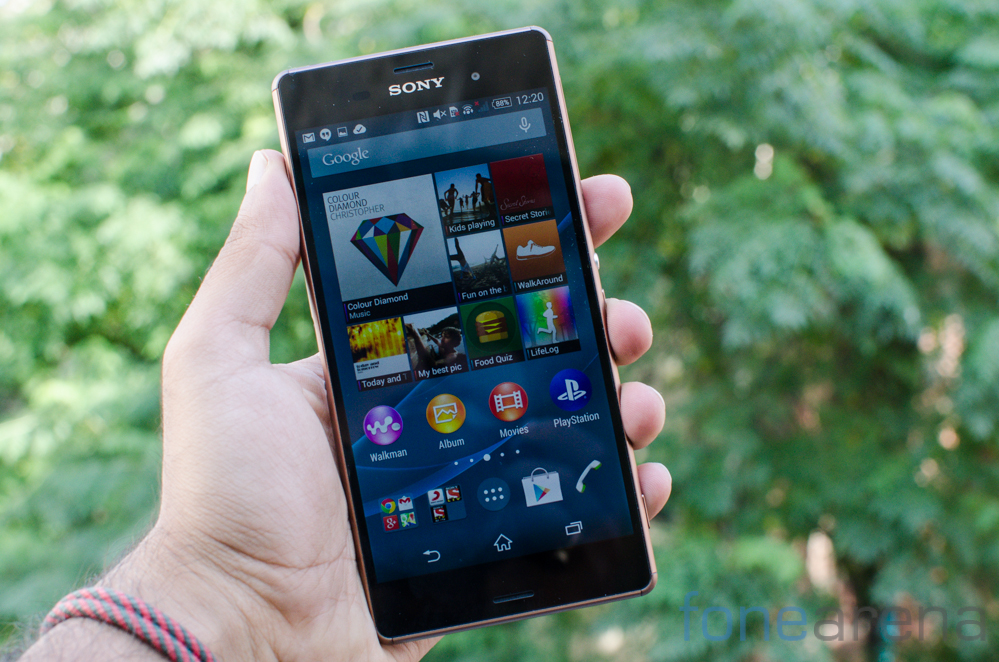
The front of the handset continues to be a large fluid slab with a black glass like finish. Distinct Sony branding can be seen at the top while speaker grille ports lie at the top and the bottom. There’s a 5.2 inch IPS LCD up front. Unlike some of the competition, Sony continues to have a 1080p panel here which we’ll be talking about more further along the review. There are no capacitive buttons on this handset and you’ll be relying on the on-screen controls for UI navigation. Bezels are slightly smaller compared to the Xperia Z2 but that can possibly be owed to rounded edges of the handset.
Moving over to the sides of the handset you notice curves all along. Despite the slab like design, the handset fits better in the hand than any other previous Xperia device. The right side of the phone sports a single flap that hides away the micro SD card slot as well as the SIM card slot. Below it is the machined aluminum power button and the volume rocker. Finally towards the bottom you spot the camera key which is increasingly becoming rare on smartphones.
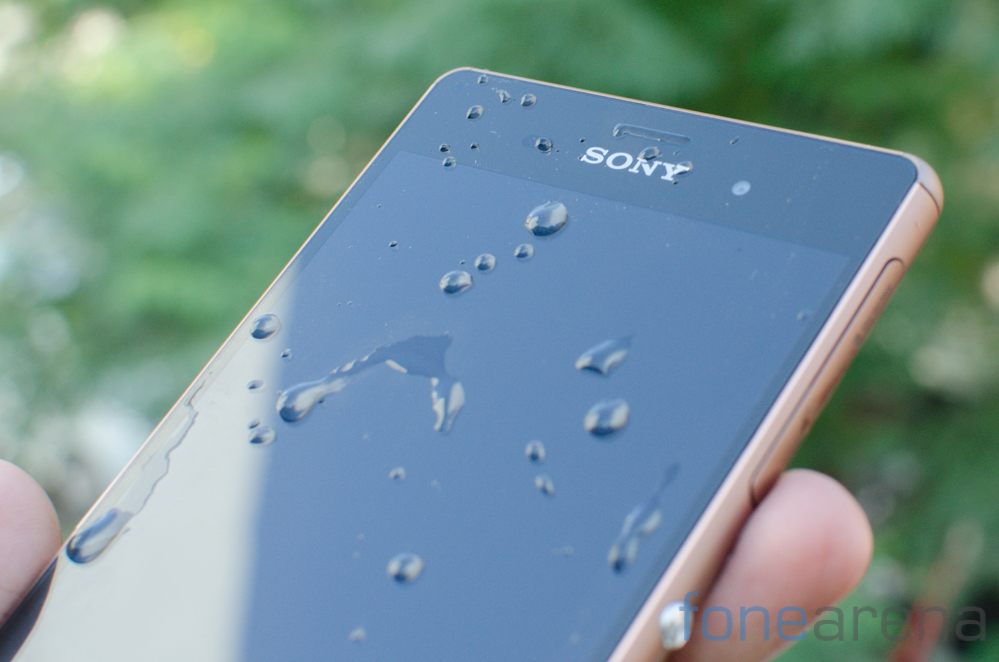
The left side is relatively clean with a flap hiding away the micro USB port and a dock connector as well. You might lament the presence of flaps for crucial ports like the microUSB port but they’ve allowed Sony to bump up the IP certification to 68 which means the handset can withstand water splashes and dust just that bit more. An eyelet for a wrist strap is also located here.
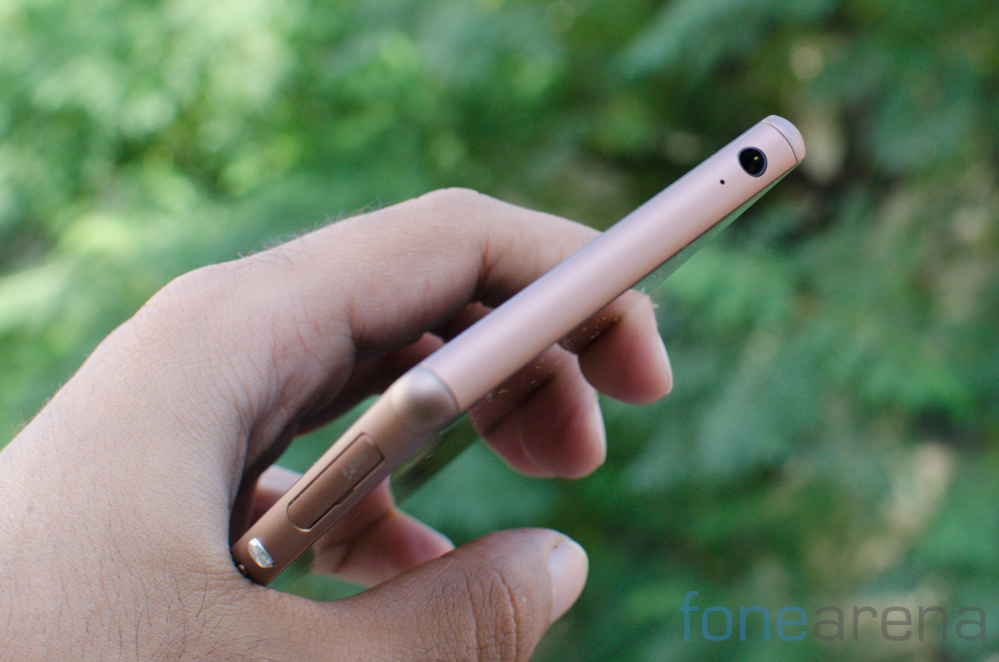
The 3.5mm audio jack is placed at the top of the phone while the bottom has been left clean and bereft of any buttons. A single RGB LED is placed at the left corner which corresponds to various notification messages. Worth noting is that the edges of the Xperia Z3 are made of nylon instead of the aluminum that runs around the handset. Why so? Aluminum while strong will take a nasty bump if you drop the phone while nylon will resist that and survive with a scuff at worst. Its a small detail that goes a long way in making the product better.

The back of the Xperia Z3 is typically Sony with minimal branding and a camera lens at the top left corner. The lens has a small aluminum ring around it that will protect against scuffs and scratches on the camera lens. The glass covered back is also vastly less prone to scratches and fingerprints. The Sony Xperia Z3 measures 146x72x7.3mm which is noticeable slimmer than the Xperia Z2. The handset is also slightly slimmer due to the reduced bezel size. Overall the Sony Xperia Z3 might not be a redesign but it has substantially improved ergonomics that make it feel that much better in the hand.
Software
The Sony Xperia Z3 has the latest version of Android ie KitKat 4.4 under the hood with the standard Xperia overlay above it. If you’ve used the Xperia Z2, there’s not much that you’ll find different and as such we’ll keep the software section of our review short.
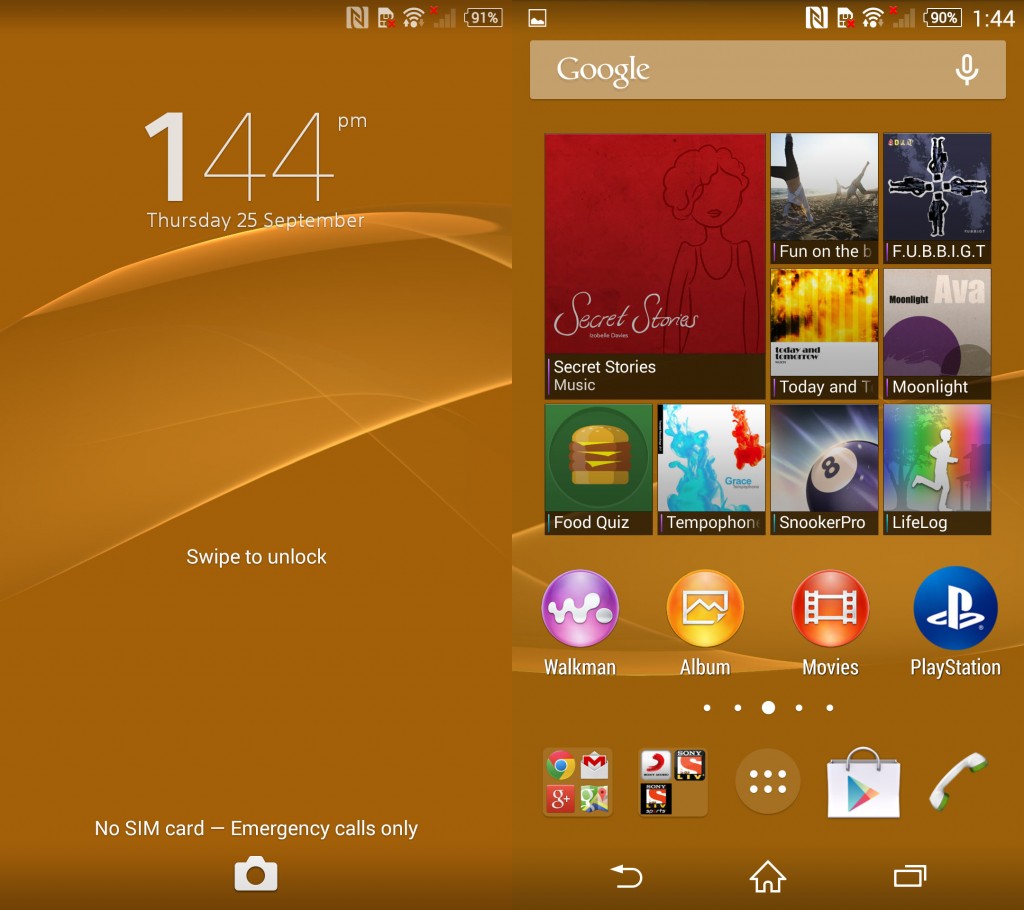
The lockscreen and homescreen experience is exactly the same as we’re used to. It is possible to place a single widget per pane on the lockscreen while the homescreen has a gaggle of preinstalled widgets that showcase some of the Z3’s capabilities. While there’s the standard pin based and face recognition based unlock modes, the Z3 also introduces double tap to unlock which works very well indeed. The lockscreen supports up to 7 panes that unfortunately can’t be rearranged. You do get the standard Xperia themes though that change the color scheme of UI elements throughout the phone.

The app drawer can be arranged in alphabetical, custom orders and also according to your most used applications. A standard 4 x 5 grid, it allows you to view up to 20 apps at a time. There’s no limit to the number of panes in the application drawer. The notification pane on the Xperia Z3 is divided between in two parts as on most other phones. The left side displays the notifications which are actionable while the right side of the phone includes toggles for oft used settings. Nothing out of the ordinary here.

We’ve always liked the multimedia application bundle on Xperia devices and the Z3 is no exception to this. The music and video applications pull in metadata and subtitles from the internet while displaying your content front and center. The audio quality is to be reckoned with as Sony has added high res audio capabilities while also offering to upscale your mp3 audio content. While not quite the same as native high resolution audio, it does help. The video player too benefits from Sony’s X-Reality engine that boosts colors and sharpens the image just a bit. Your mileage will vary but it does help with some content.
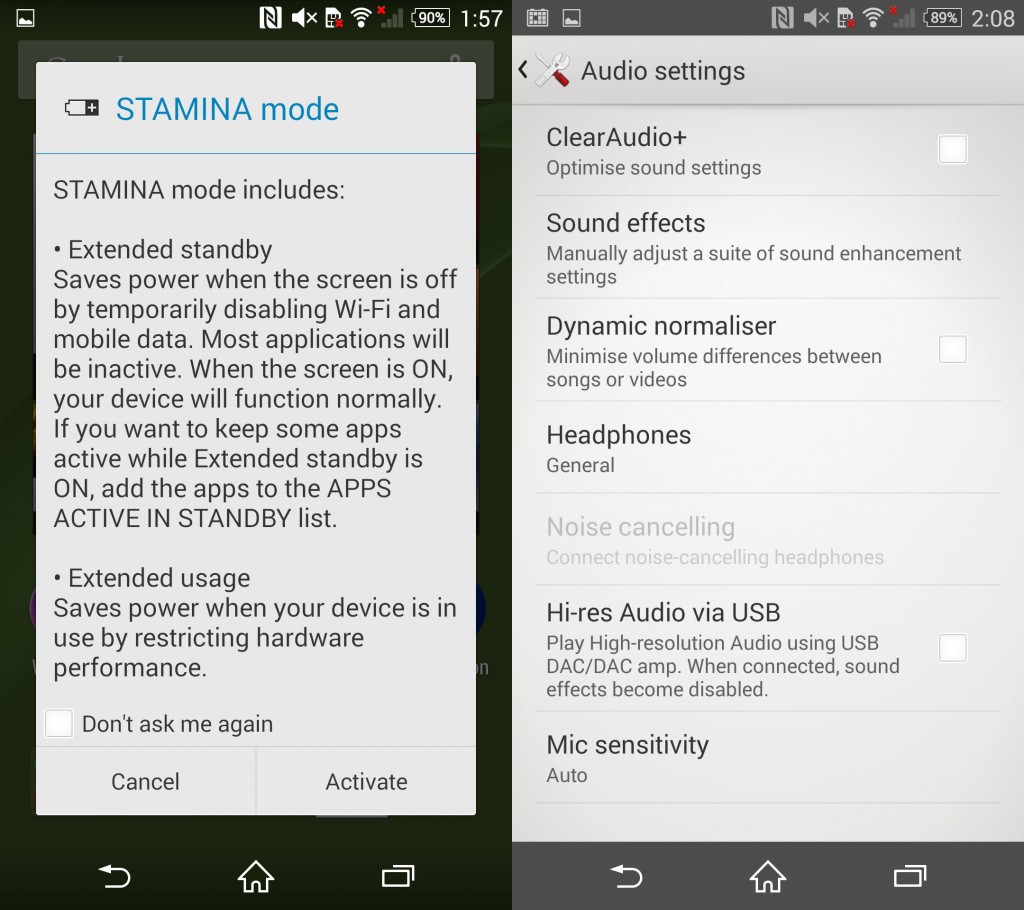
Sony’s Small Apps feature works similar to Samsung’s mini apps implementation and allows you to have widgets and selected applications available across panes and over any other application you might be using. While this works well, we found that the interface got a bit too cluttered though it is certainly usable. There are a whole host of settings waiting to be discovered on the Xperia Z3 that really help to make the device your own. Features like adjusting the white balance to tweaking the contrast levels, we really like the level of customization that Sony allows with the handset. Overall the Sony Xperia Z3 might not pack a whole host of new software functionality but it builds upon and adds subtle tweaks that you’ll definitely appreciate over extended usage.
Performance
The Sony Xperia Z3 is powered by a 2.5Ghz Qualcomm Snapdragon 801 MSM8974AC chipset. The Adreno 330 GPU is clocked at 578Mhz. There’s also 3GB of RAM onboard. All said and done, this is just a subtle bump over the the Xperia Z2. Storage onboard the handset is 16GB of which just about 11.6GB is available. We’ve always maintained that hardware specs are only part of the performance story and this remains true with the Xperia Z3 as well. The handset performs well with nary a lag despite putting it through its paces and switching on multiple resource heavy applications. We also put the phone through our standard range of benchmark tests to give you some comparative scores. Follow through below to see how the Z3 compares to the rest of the Android flagship competition.
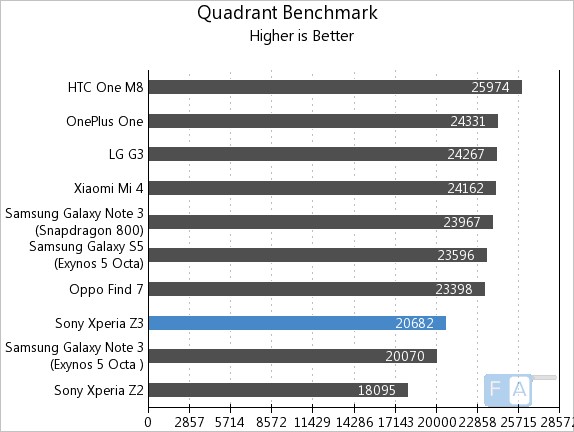
The phone scores 20682 points in the the Quadrant benchmark which makes it competitive with flagship devices but it won’t really beat devices on the Snapdragon 805 chipset.
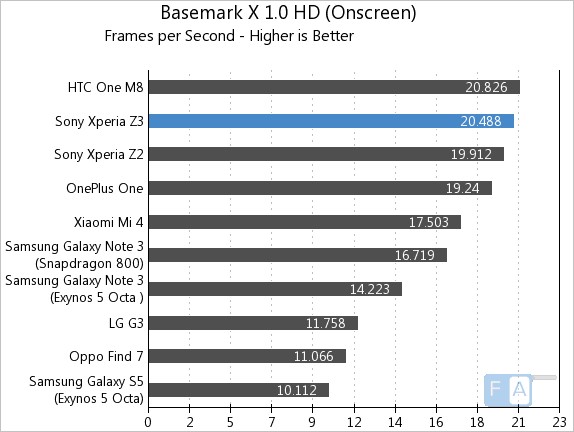
The phone manages 20.488 FPS in the Basemark X 1.0 HD benchmark which is GPU focussed. This places the handset towards the top of the spectrum.

In the Nenamark 2 benchmark, the phone manages 60 FPS which is just marginally behind the top of the competition. Check out the complete set of Sony Xperia Z3 benchmarks here.
Check out the gameplay and the gaming review to know about the gaming performance of the smartphone.
httpv://www.youtube.com/watch?v=jQsUmPmHJ4w
httpv://www.youtube.com/watch?v=pvXPElPsP6g
Display
Over three generations of phones, Sony has learnt its lessons and taken in consumer feedback to offer what is truly a wonderful display. The original Xperia Z1 had a panel which was barely visible in sunlight and poor viewing angles would be an understatement. The Z3 on the other hand has a 5.2″ 1080p IPS LCD that is tack sharp, offers fantastic brightness levels thanks to the Live Color LEDs incorporated into the panel. Sony’s own TRILUMINOS display technology also helps on this front.
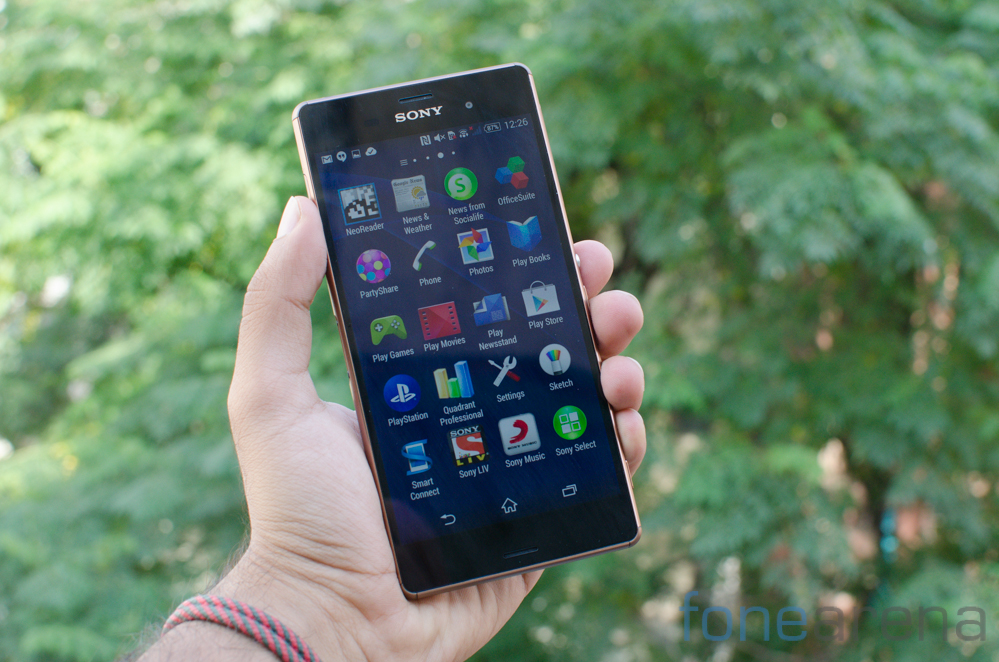
Merely based on our experience, we’d call this one of the most beautiful displays that we have seen. Sure, the Note 4 and the LG G3 have higher resolution displays but in day to day usage, you just don’t notice the difference enough to detract from the Xperia Z3 and you definitely wouldn’t at this screen size.
Camera
There’s a 20.7MP camera on the Sony Xperia Z3 with a Sony G lens and a 27mm wide angle f/2.0 aperture. The 1/2.3 inch sensor is small and has been carried forward from the Xperia Z1 which does show in images. We’ve never been particularly happy with images shot on the Xperia Z series and this continues here too. Using the Superior Auto mode at 8MP results in slightly lower noise levels with the tradeoff being lower resolution.
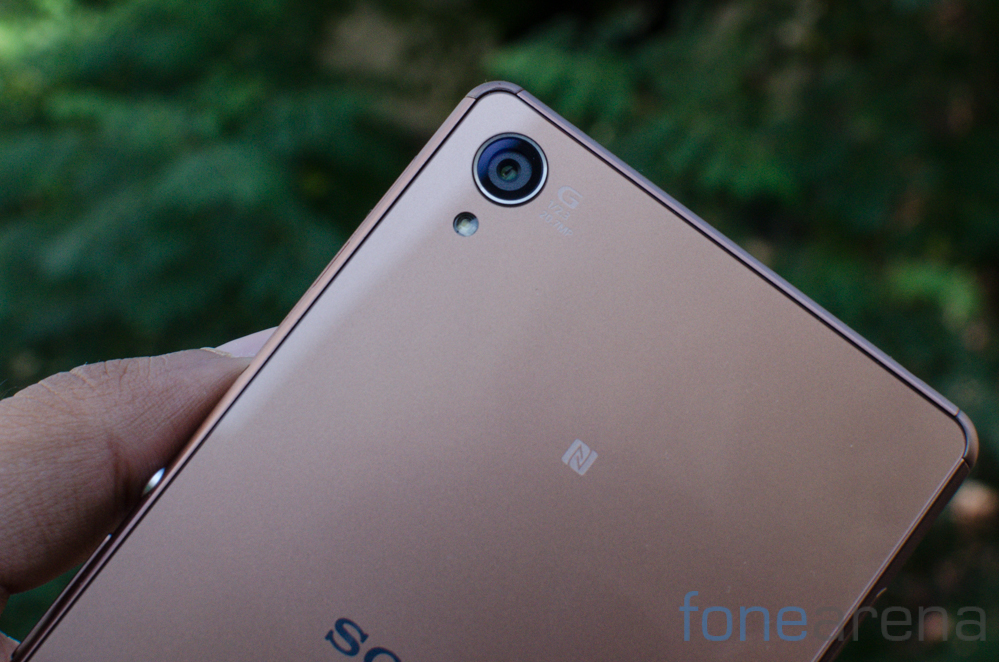
Dynamic range in the shots is generally lacking with washed out images the norm rather than the exception. Even the HDR mode doesn’t really do much to assist here with blown highlights and dark areas that are simply overexposed. Sony has introduced a High ISO mode on the Xperia Z3 that tops off at 12,800. As you’d expect, this results in very high noise levels and should only be used when absolutely essential. As it goes, this mode is only available in manual settings. We would have prefered to see optical image stabilization instead which would have helped both with stills and videos. We’ve included some sample shots taken with the Xperia Z3 below.
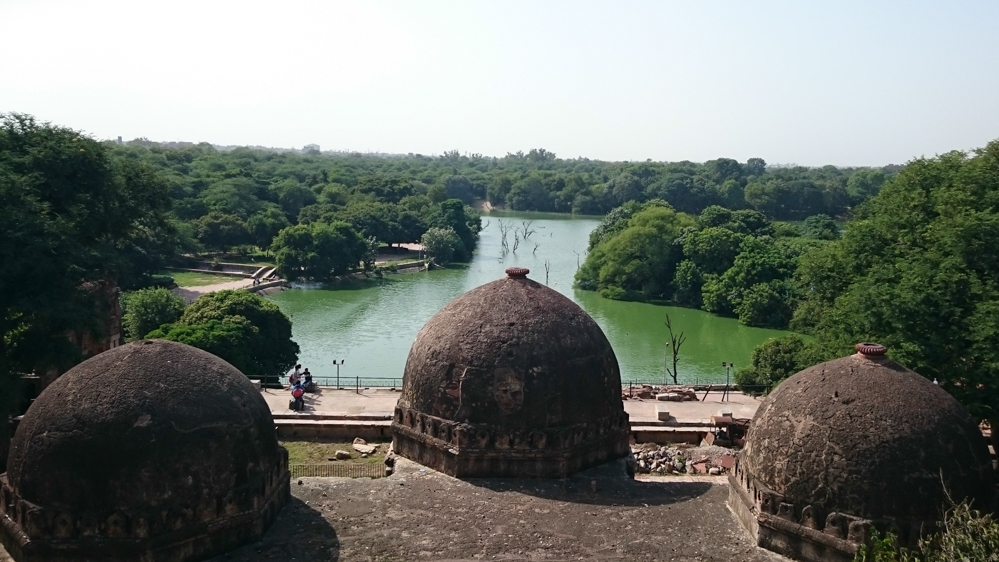
The Xperia Z3 can shoot 4K video at 30FPS and has options for 1080p video at both 30 and 60FPS. 4K video is mostly sharp and records at close to a 50Mbps bitrate which captures a decent amount of details though predictably results in massive video files. 1080p at 60FPS proved to be the right balance between file size and video quality in our opinion. You can also capture slow motion (720p) and HDR video (1080p) though your mileage will vary drastically depending on the scenario. Just like in images, we found that video too was a bit short on dynamic range with somewhat washed out footage. Further, switching on digital image stabilization results in a substantial loss in field of view as the software crops into the shot to compensate for jitter introduced by motion.
Connectivity & Battery Life
While most smartphone manufacturers have refrained from introducing dual SIM variants of their flagship phones or have restricted them just to China, Sony is planning to introduce both single and dual SIM variants of the Xperia Z3 though availability will be region dependent. Same goes for LTE support on the handset. The handset has the usual range of radios on board which includes support for Bluetooth 4.0 with apt-X, WiFi a/b/g/n/ac, WiFi Direct, GPS, Glonass, NFC and FM radio too. The phone does not have USB 3.0 support but does allow for USB OTG peripherals as well as both MHL and Miracast based screensharing capabilities.
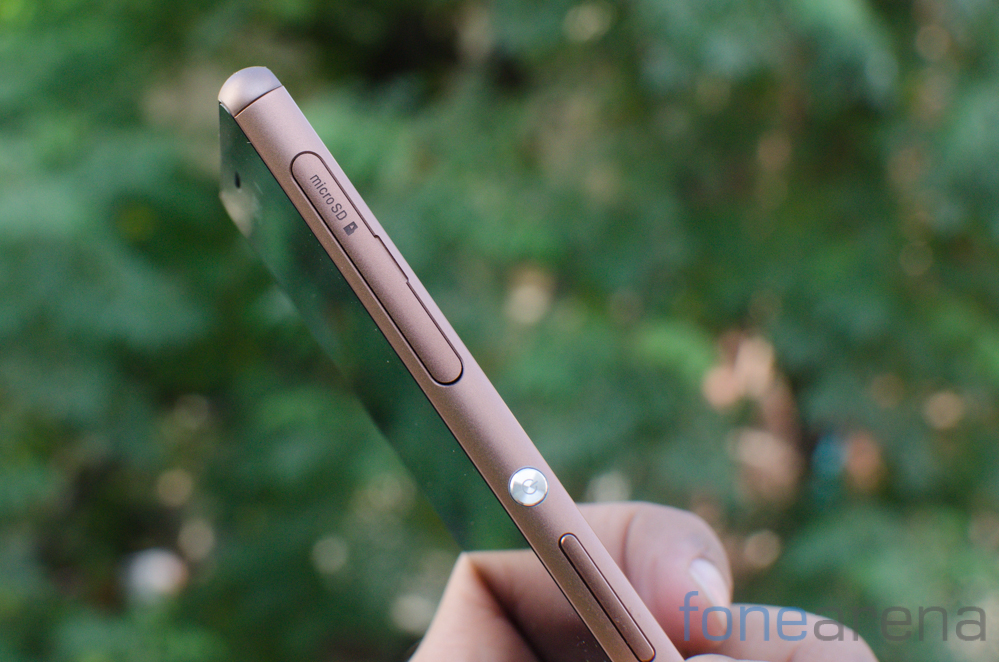
While testing out the battery life of the Sony Xperia Z3, we found it a bit surprising to see that the handset had lower battery capacity at 3,100 mAh when compared to the 3,200 mAh unit on the Z2. However improved software optimization and internals means that actual autonomy was practically the same. The phone easily lasted a work day and could be stretched to over two days with frugal usage. Sony has also built in a Stamina mode that switches off applications and radios when you turn off the display. This helps extend battery life further.
Conclusion
From a technological standpoint, the Xperia Z3 seems to have appeared way too soon. There’s not much that could or has been upgraded and Sony too has played it safe. The phone has little over the erstwhile flagship ie the Z2. This proves to be a problem for Sony as there is little to portray the Xperia Z3 as a true replacement for the Xperia Z2. The build quality is obviously good given the Sony lineage but we do think that the Z3 has improved ergonomics drastically. The display is fantastic and can be considered a marginal improvement over the Z2 especially when it comes to brightness levels. Talking about performance, we’re at a point that we basically see marginal bumps and very minimal improvements in day to day usage. The same goes for the Xperia Z3 as well which displays better benchmark scores but not much of a tangible improvement in usage.
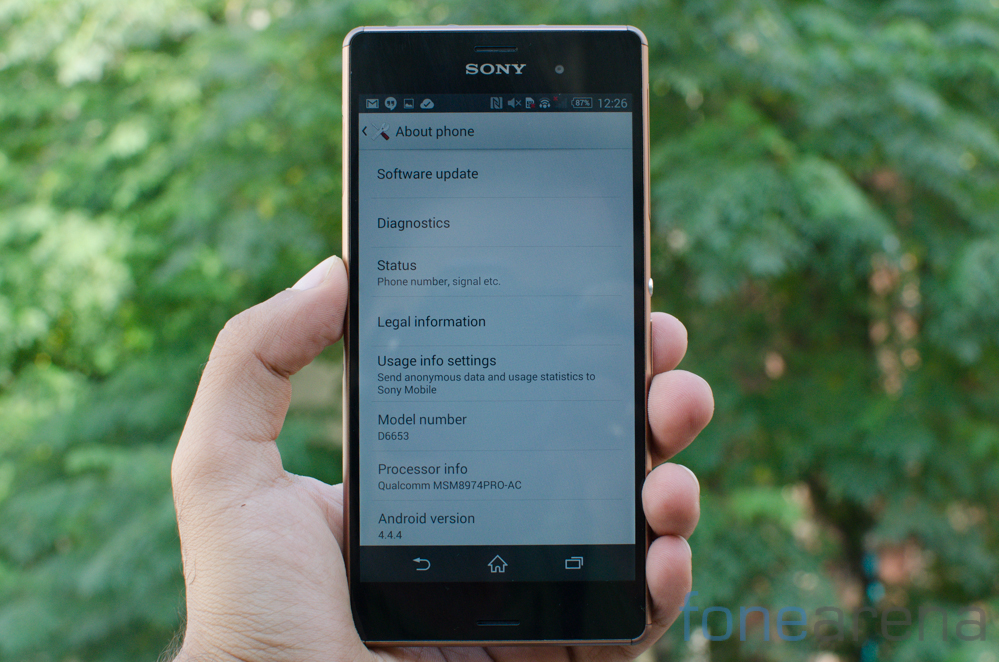
The camera is perhaps the one area where we just weren’t completely satisfied with the Z3. The small sensor, lack of optical image stabilization and lackluster performance with noise reduction left us rather unimpressed. Images even when oversampled would invariably be lacking in dynamic range or showcase loss of detail. We also noticed high noise levels at higher ISO levels. The Z3’s camera ain’t bad but the competition from the likes of Samsung, Apple and Nokia’s camera centric devices give it a run for its money. The Sony Xperia Z3 is a beautiful smartphone with top notch build quality and flagship grade specifications. It brings an excellent display, quality software and improved dust, water proofing. There’s the small matter of the camera which just isn’t good enough. The phone like its predecessor, proves itself as a competitive flagship device but doesn’t offer enough reasons for current Z2 owners to upgrade. In fact the handset’s direct competition is the Z2 itself that offers much of the same experience at a substantially lower price point. The Sony Xperia Z3 comes in Black, White, Green and Copper colors of which the green color won’t be available in India at launch. The device is priced at Rs. 51,990.
Pros
- Excellent display
- Build quality
- Software package
Cons
- Camera
- Price



